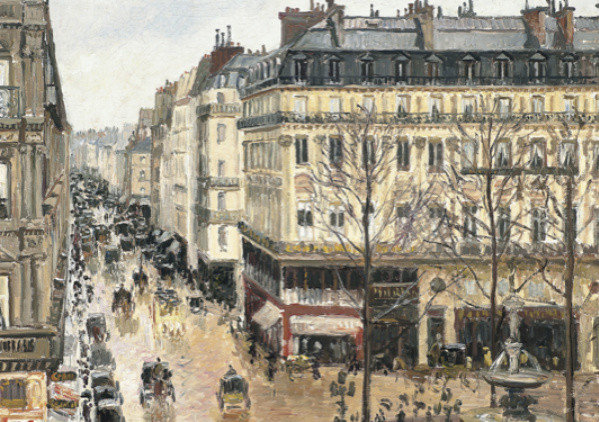(Germany’s highest court issued a much-anticipated ruling on a challenge by a collector to the listing of his painting in the so-called Lost Art database in Magdeburg, Germany. The Bundesgerichtshof (BGH) ruled that the listing will not be deleted where “based on true facts.” The ruling underscores the informative, rather than legal, nature of the database, which describes itself as documenting “cultural property that was either demonstrably seized from their owners between 1933 and 1945 as a result of Nazi persecution, or for which such a seizure cannot be ruled out.” Insofar as the case just decided involves a well-known victim of Nazi-persecution, the clarification is a welcome and important one. As always in this area, however, the hard cases are harder. The case stopped short of resolving more nuanced cases, or addressing what recourse a collector might have in situations where a listing effectively makes a painting impossible to sell. Perhaps the best course would be to take heed of the way the court decided this case: the database is a critical tool of information, but a less useful one when it comes to sorting out legal rights.
German High Court Rules Painting Will Stay Listed in Nazi-Era Lost Art Provenance Database
Topics: Lost Art Database, Germany, Bundesgerichtshof, Van Gogh, Magdeburg, Nazi persecution, BGH, IFAR, Art Loss Register, A Tragic Fate, Girl from the Sabine Mountains, Francis Xavier Winterhalter, Vue de l'asile et de la Chapelle de Saint-Rémy, Elizabeth Taylor, German Lost Art Foundation, Calabrian Coast, Kalabrische Küste, Concordia University, Zentrum für Kulturgutverluste, ALR, Düsseldorf, Bettina Brückner
Cassirer Heirs' Claims to Pissarro Work Revived by Appeals Court, the Year 2013 Shows that the Tide for Restitution May be Shifting Again
The U.S. Court of Appeals for the 9th Circuit restored last week claims by heirs of Lilly Cassirer against the Thyssen-Bornemisza Collection for the return of the Camille Pissarro painting Rue St. Honoré, après-midi, êffet de pluie.
Topics: Nuremberg laws, Schwabinger Kunstfund, Cornelius Gurlitt, Lilly Cassirer, California Code of Civil Procedure § 338(c), Dorothy Nelson, Thyssen-Bornemisza Collection, Julius Schoeps, Rue St. Honoré après-midi êffet de pluie, Claude Cassirer, Von Saher v. Norton Simon, de Csepel, Jacques Goudstikker, California Code of Civil Procedure § 354.3, Gurlitt Collection, Foreign Sovereign Immunities Act, Hans Sachs, Von Saher v. Norton Simon Museum of Art at Pasaden, Madame Soler, Bundesgerichtshof, Hildebrand Gurlit, Entartete Kunst, Hans-Heinrich Thyssen-Bornemisza, Hungarian National Gallery, Nazis, Munich, Deutches Historisches Museum, FSIA, Preemption, Gurlitt, Harry Pregerson, Restitution, field preemption, Marei Von Saher, Herzog collection, Bavaria, Claudia Seger-Thomschitz, Looted Art, World War II, Foreign Sovereign Immunities, Pinakothek der Moderne, degenerate art, Altmann v. Republic of Austria, 578 F.3d 1016, Freistaat Bayern, beschlagnahmte Kunst, Camille Pissarro, Kim McLane Wardlaw, Nürnberger Gesetze, Raubkunst, Museum of Fine Arts Boston, Cassirer v. Thyssen-Bornemisza Collection, verschollene Kunst, Kunstfund München
Gurlitt Vows to Fight for Art Collection, Possible Limitations Under German Law Still Unclear. Does Austria Have Say?
Der Spiegel conducted a face to face interview with Cornelius Gurlitt that was published over the weekend, addressing his intentions about the 1,400 artworks connected to Nazi looting. Most striking was Gurlitt’s declaration with regard to the artworks seized by Bavarian tax authorities “I will give nothing back willingly.” The highlights of the interview, available in both German and English (the fuller version only in print, in German), ranges from discussing Gurlitt’s reclusive existence, to his perceived victimhood, to some standard-fare denialism (like that Hildebrand engaged in the commerce of “degenerate art” nearly always sold under duress or worse only in order to “save” the art).
Topics: veschollene Kunst, Cornelius Gurlitt, Schwabinger Kunstfund. Kunstfund München, Verjährungsfrist, Legal Times, prescriptive ownership, Gurlitt Collection, österreiches Recht, Bundesgerichtshof, Hildebrand Gurlit, Entartete Kunst, Nazis, Munich, Salzburg, Gurlitt, Restitution, City of Gotha et al. v. Sotheby’s et al., Statute of Limitations, Looted Art, World War II, deutches Recht, degenerate art, Austria, München, Raubkunst, German Civil Code § 221, Österreich
Hans Sachs Collection Epilogue: Posters to Go on Sale in New York at Guernsey’s
The Hans Sachs collection that the Bundesgerichtshof in Karlsruhe ordered in March be returned to the Sachs heirs will be put up for auction in New York. The collection had more than 12,000 posters by artist that included Henri de Toulouse-Lautrec, Ludwig Hohlwein, Lucian Bernhard and Jules Cheret. The Deutsches Historisches Museum in Berlin, a museum of German history, held for several decades parts of a poster collection was seized from Sachs in 1938. After his arrest and incarceration, Sachs fled the country with his family.
Topics: Berlin, Lucian Bernhard, Guernsey’s Auctioneers & Brokers, Catherine Hickley, Hans Sachs, Bloomberg, Bundesgerichtshof, Ludwig Hohlwein, Restitution, Henri de Toulouse-Lautrec, Karlsruhe, World War II, Arlan Ettinger, Deutsches Historisches Museum, New York
Poster Collection Seized by Nazis Ordered Returned by German High Court
Catherine Hickley of Bloomberg reports today from Berlin about a court-ordered return of more than 4,000 once owned by Hans Sachs, a Jewish dentist chased out of Nazi Germany. The Bundesgerichtshof (BGH) is Germany’s highest civil court, and handed down the decision.
Topics: Berlin, Lucian Bernhard, Catherine Hickley, Hans Sachs, Bloomberg, Sachsenhausen, Bundesgerichtshof, Ludwig Hohlwein, Deutches Historisches Museum, Collections, Restitution, Henri de Toulouse-Lautrec, World War II, BGH, Kristallnacht




